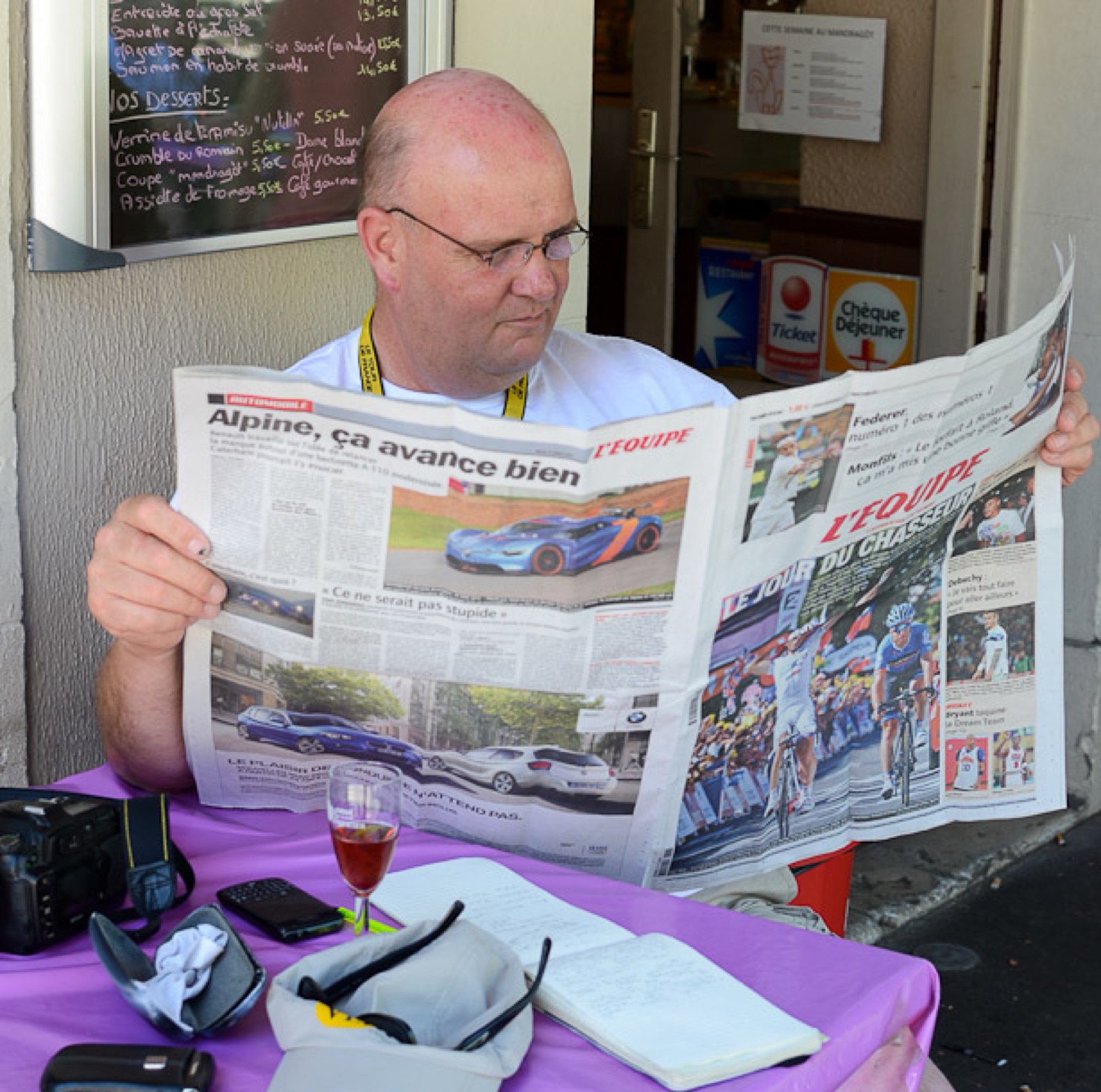Whilst we try to keep abreast of the current race scene, it seems we’ve become a bit of a focal point for 70’s races, classics and kermis racing, and racers.
We’re not complaining…
Our reader, Graham Robson was another who has shared some of his 70’s memories with us and with his kind permission we have the pleasure of sharing them with you here.
* * *
By Graham Robson
Dear VeloVeritas, I particularly enjoy your interviews with British riders from the 1960’s and 70’s such as your one with Nigel Dean. His mention of finishing second to Patrick Sercu at Dunkirk in 1975 reminded me that I’d seen that race.
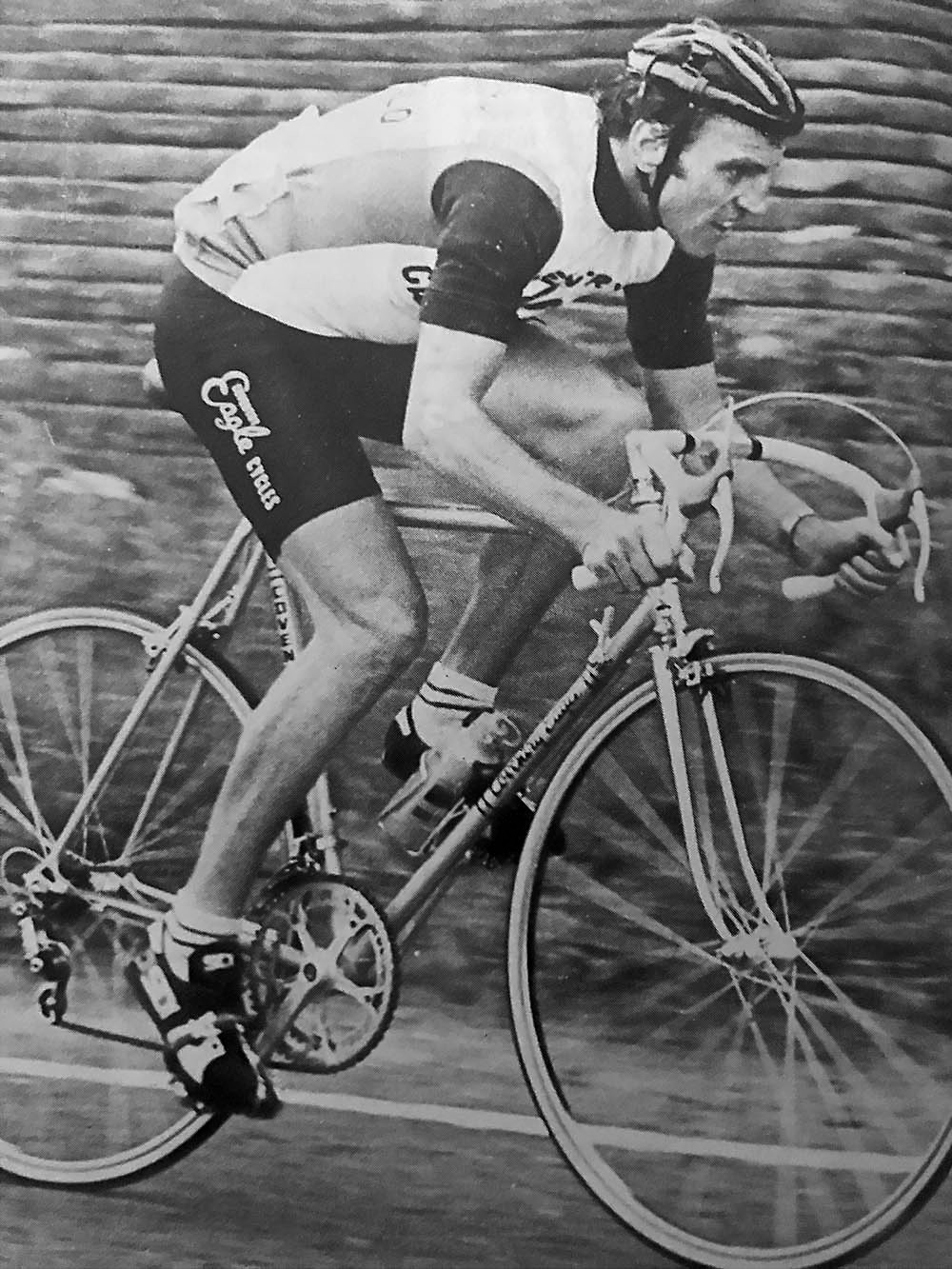
After my exams I had decided to go to Belgium for a couple of weeks to watch the kermis races, hitching from place to place and with no accommodation booked.
The first race was in Poperinghe so I hitched from Ypres and when I asked the driver if there was anywhere to stay in Poperinghe he dropped me off at Talbot House.
During World War One Poperinghe had been a base for British troops and an Army chaplain had opened Talbot House as a recreation centre for the soldiers.
It still served as a memorial and museum to that time but also provided accommodation.
I walked into the town centre with the warden and his family to watch what was described as an ‘international evening criterium.’
The 30 man field was a who’s who of Belgian cycling including Merckx, Maertens, De Vlaeminck, Verbeeck, Dierckx and Sercu, all the greats of that era.
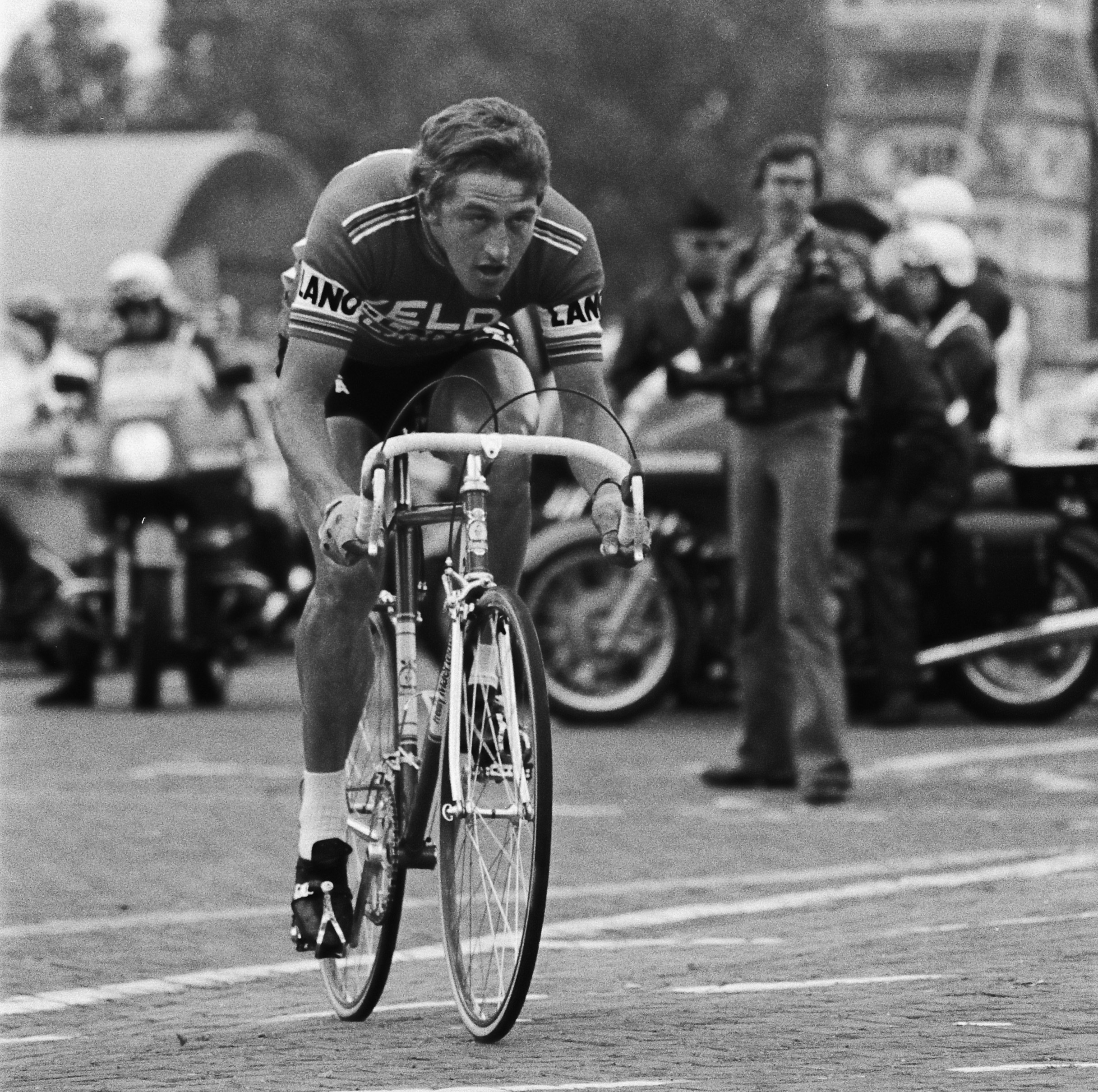
The race began at 7:00 pm and for the next two hours, every couple of minutes a strung out line of riders came past with Eddy Cael (Flandria) seemingly always the last man.
The atmosphere increased as the sky darkened and the riders raced under the streetlamps and the light from the shop windows.
At the finish Patrick Sercu, in the iconic Brooklyn jersey, outsprinted Maertens and De Vlaeminck.
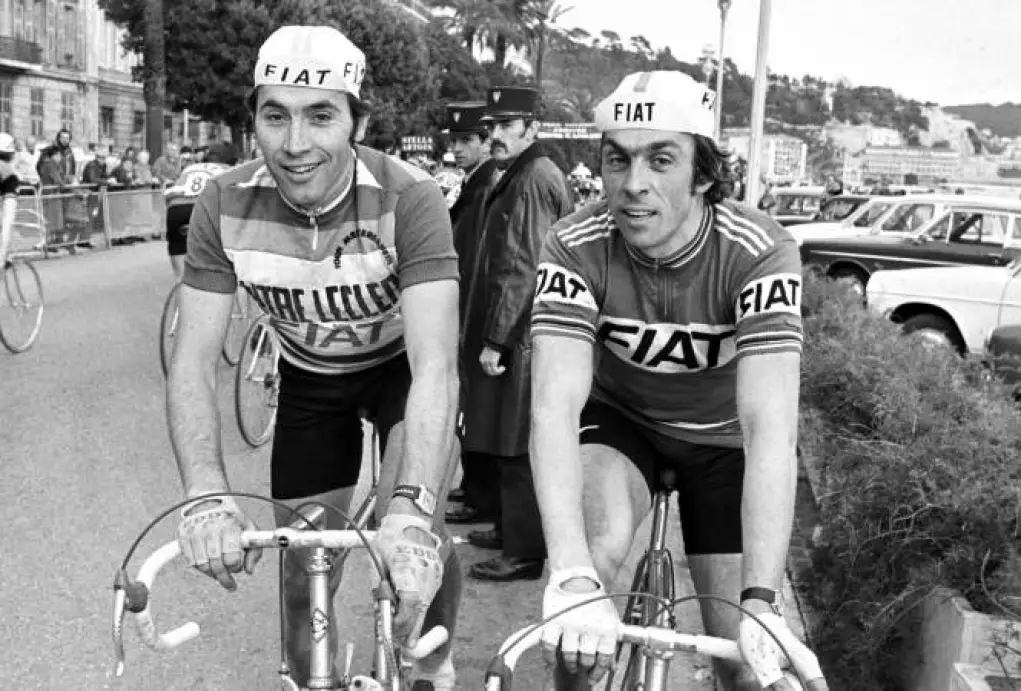
The following day I hitched to Dunkirk to watch the Circuit du Port de Dunkerque.
At that time the race was included each year in the calendar of British pro races, so it was an opportunity to see them all racing on the continent.
On the dockland circuit a small group got away including Nigel Dean but unfortunately Sercu was also there and in the sprint he recorded his second win in two days.
Geoff Wiles (Holdsworth) finished well up in the bunch sprint.
At the start I had met a chap called Steve who told me that he had driven down from Ghent with Gerry Butterfill, one of the British pros.
I knew that Gerry had turned pro the year before as a single sponsored rider for Alan Quinn Tailoring as I had seen him racing that year in the British pro road championships at Harrogate.
As Steve and I walked round the course I told him what I was hoping to do over the next couple of weeks and he suggested that I should go back with them to Ghent and stay at Mrs Deene’s, where he was staying.
On the drive back Gerry said that he was staying in Ghent for a few weeks and that he would take me to wherever he was racing.
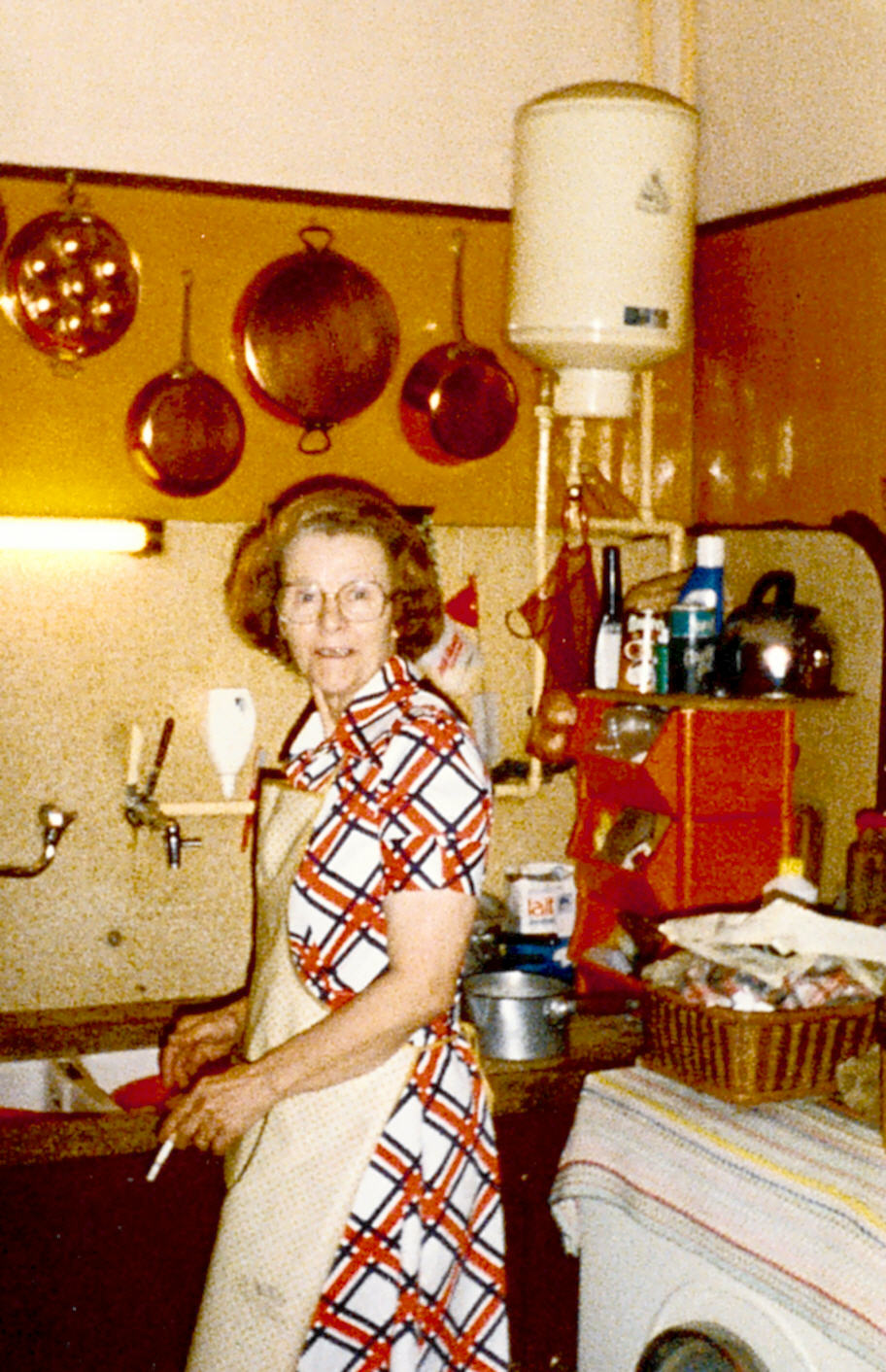
The next morning I met Mrs Deene and arranged my accommodation and then Gerry came round to collect me as he was racing at Haasdonk, a village on the way to Antwerp.
The race consisted of seven laps of a 20km circuit and with a couple of laps to go a group of three broke away.
At the bell they had a lead of about two minutes over the bunch which included Gerry.
The break contained Eric Leman but his days as a Classic winner seemed long gone as he was no longer riding for one of the top teams, and in the run-in to the finish he was dropped by the winner Ronny De Bisschop (Frisol).
Gerry finished in the middle of the bunch in about 20th place which I thought was an excellent ride as I knew that he hadn’t had any top six placings in British pro races.
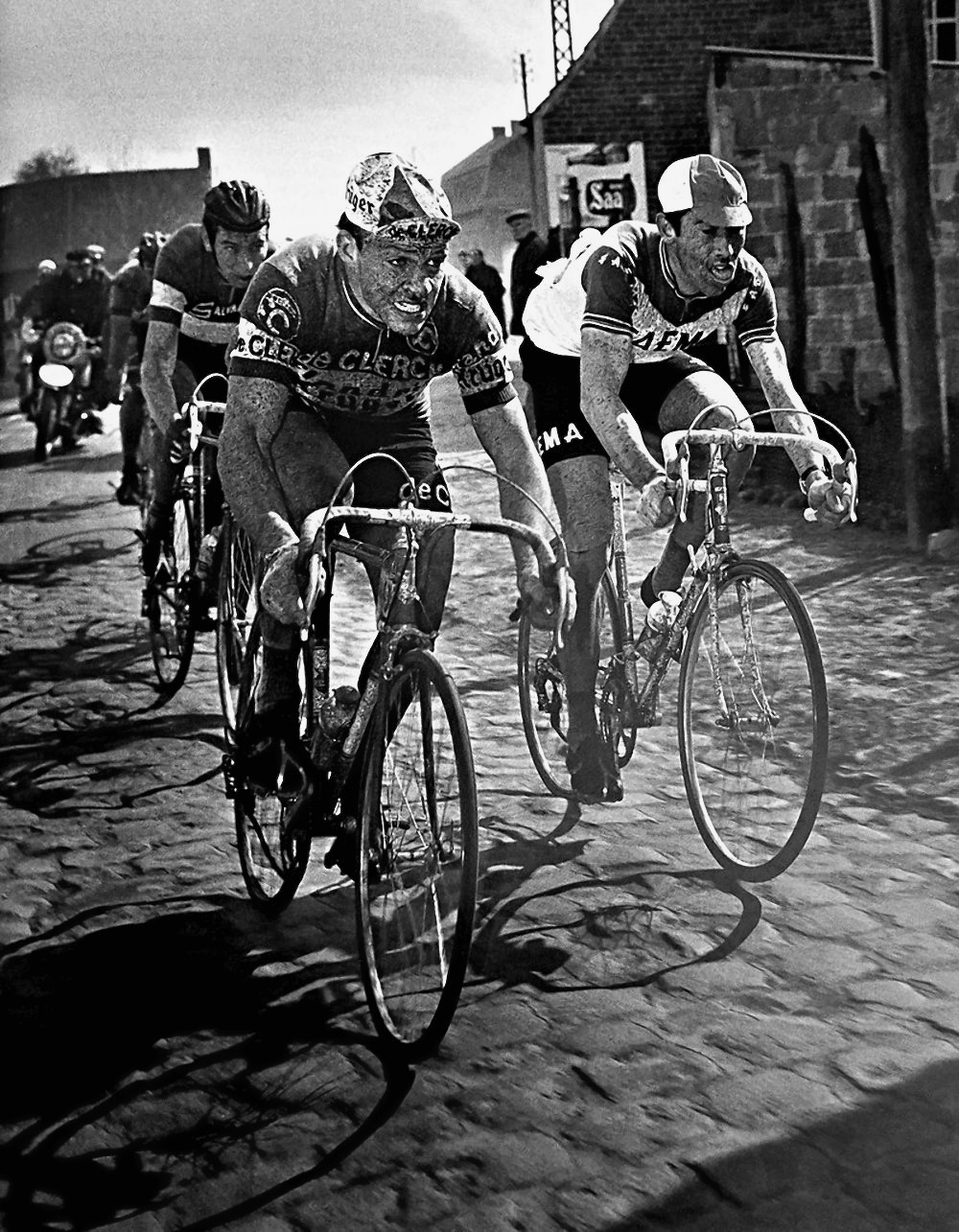
I went back to where he was staying in Ghent, not far from the Plume Vainqueur bikeshop.
I was surprised when he opened the door of an empty shop. There was a counter along one side and most of the floor was covered with piles of old newspapers.
I went up the stairs to Gerry’s room and to say that the furniture and facilities were basic was an understatement; the whole place was awful.
I couldn’t imagine that any of the other riders in that day’s race would have gone home to similar conditions and then be expected to race successfully the following day.
There were also a couple of young English riders there.
I realised that such conditions were probably a rite of passage for any aspiring young British rider racing in Belgium at that time, but by then Gerry was 36 years-old, an age when most riders would already have been retired for a few years, and he was trying to compete against experienced Belgian riders who made their living just riding the kermises.
Years later I read Alan Peiper’s autobiography and realised he had stayed at the same place a couple of years afterwards and that he had described it as squalid.
Over the next few days I would spend a couple of hours each morning looking at the sights in the centre of Ghent before Gerry called and took me to various races.

I would see him sign-on invariably in a packed café and watch as his name was added to the bookmaker’s board.
He would then knock on a nearby door and I was amazed how people willingly invited him and other riders into their homes in order to change.
Sometimes it was into a living room, other times an outhouse or garage.
There were always lots of fans milling around at the start and some of them would want Gerry to pose for a head and shoulders photo.
Others who had taken such a photo of him at an earlier race would ask him to sign that photo.
At that time I didn’t realise how important it was for the really dedicated Belgian fans and collectors to have such a photo of every rider who took part in the kermises.
After the race started I would wander round the town or village taking in the typical Belgian race day atmosphere such as the frîtes stalls and the blaring Europop coming over the tannoy interspersed with race commentary and adverts for all the race sponsors.
When people came out of the bars it was clear that the riders were due soon so I would go back to the roadside to try to see where Gerry was in the bunch.
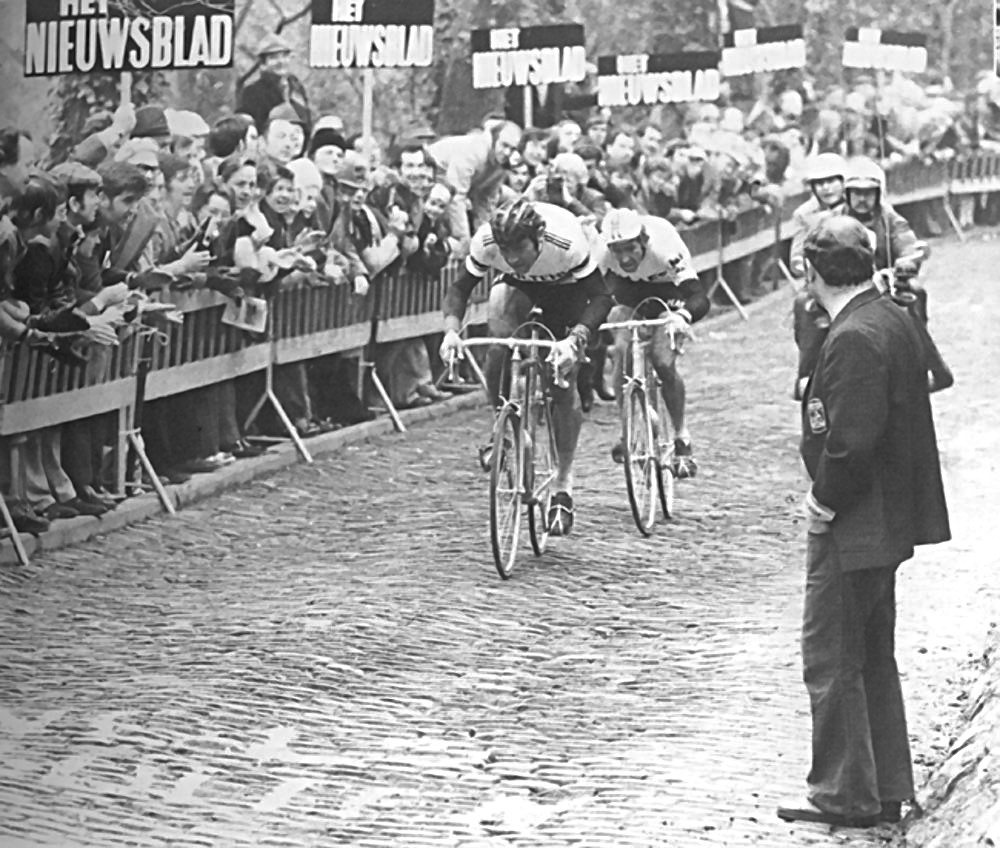
Unfortunately he punctured in a couple of races and in a couple more his group packed as they came through the finish, saving themselves for their next race.
Sometimes on the drive back to Ghent Gerry was clearly frustrated, bemoaning the effort he was putting in and the lack of reward, since it was costing him money to ride.
I had always been interested in the weaker teams in the UK such as Croad Automatics and Evian Simplex, so whilst I wanted to see the top riders I was just as interested in seeing the kermis teams like Carlos and Munck Becks.
There was also the Dutch Rompelberg Bonfrere team whose jersey looked like a faded version of the Molteni jersey – but that was where any similarity between the two teams ended.
They were also interesting because they were actually sponsored by a current rider, Fred Rompelberg, and by a Dutch footballer.
Twenty years later Fred Rompelberg was still racing as a professional when he became the holder of the bicycle land speed record at 167mph.
At each race I would specifically look for any Gero riders as Michael Wright rode for them.
He had been my favourite rider ever since I had bought the 1965 Tour de France issue of Sporting Cyclist where there was a photo of him winning a stage and another photo of him sitting on the bonnet of the Wiels Groene Leeuw team car before the start of the next stage.
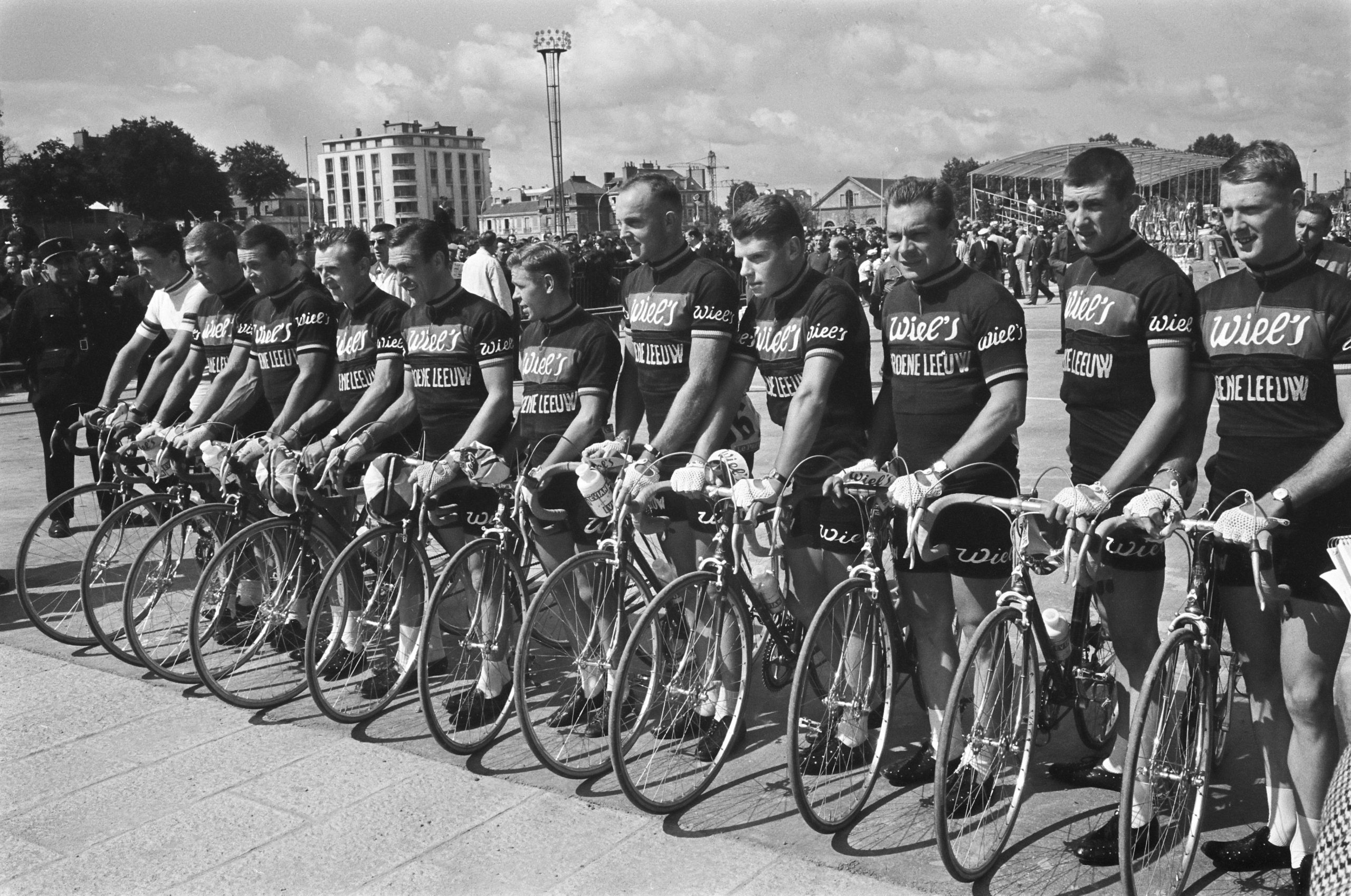
Fortunately I saw him in a couple of races including one at Eekloo where he finished sixth in a race won by Albert Van Damme, the former world cyclo-cross champion.
He wasn’t the only cyclo-cross rider preparing for the new season as at several races four Swiss riders would turn up including Albert Zweifel who would win that season’s world championship.
My stay was the two weeks leading up to the World Road Championships in Yvoir in Belgium.
The top riders were preparing for them so I saw Freddy Maertens and Roger De Vlaeminck each win races of over 200kms which were much longer than the usual kermis race.
On the day of the World Championships Gerry, Steve and I watched the race in a bar in Ghent.
De Vlaeminck was clearly in form as he easily won the sprint, but unfortunately for him it was only for second place as Hennie Kuiper won after a solo breakaway.
That was the end of my Belgian fortnight. I had been so lucky meeting Gerry and Steve in Dunkirk.
They had solved my accommodation worries, and then Gerry had taken me to see the kermis races so that I never had to hitch hike to them.
I really admired what Gerry was trying to do even though it might have seemed brave – \even foolhardy at his age.
However despite it being such a struggle for him, in years to come he would always be able to say that he had raced alongside Merckx, Maertens, De Vlaeminck and all the other greats in what was clearly a golden era for Belgian cycling, whereas we could only see those riders from the roadside, occasionally on TV, or more usually in magazines.
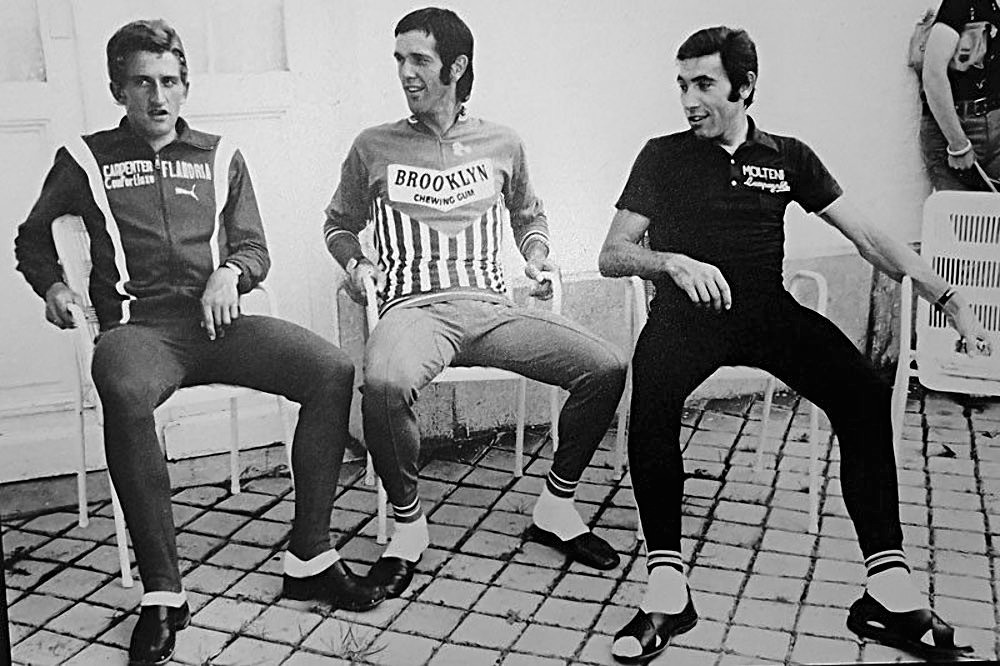
So thanks Gerry for such an insight into the life of a pro cyclist rider in the Belgian kermis races.
Since thinking about writing this I’ve found from the internet that Gerry is now living in the Scarborough area.
On the Pinterest page of the adventurer and writer Alasdair Humphreys there is a photo of Gerry as an 80 year old still riding his bike.
He is listed on the Cycling Archives website as riding for the Xaveer Viner team in 1982 when he would have been 43 and probably the oldest professional cyclist still racing.
However there isn’t a photo of him whereas there are photos of all the other British riders in the team.
* * *
With thanks to Graham for his wonderful memories. You can read out interview with Gerry Butterfill from a couple of years ago.
The 70’s – the best music, the best cars and the best bike riders.


